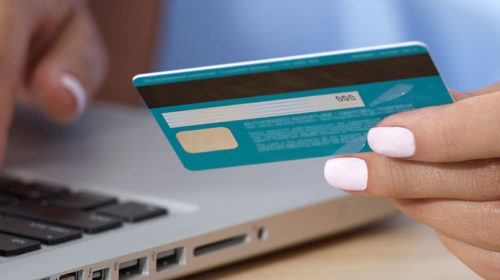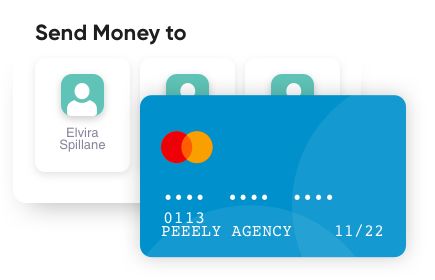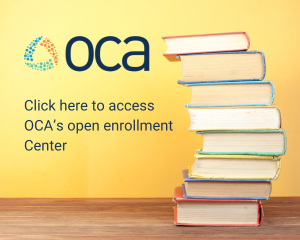Card Transaction Rules
September 28, 2023 | Debit Card Quick Alerts


Overview on Debit Card Adjudication and Substantiation Requirements
The Internal Revenue Service (IRS) regulations and other guidance applicable to healthcare benefit cards mandate that each and every electronic payment card payment must be adjudicated and properly substantiated and that only those transactions that fit squarely into very limited “auto adjudication” categories need no additional paper substantiation because they are self-substantiating by their very nature.
Below you will find the three categories that allow for “auto adjudication”

I.I.A.S. Approval System
This Inventory Information Approval System (“IIAS”) System was added by Notice 2006-69. Under the IIAS, no additional substantiation is required if the retail merchant compares the item or items to a pre-determined list of covered expenses and restricts use of the card only to those items that fall on that list. Many plan sponsors and administrators are already using health care vendors to verify the transaction at the point of sale by comparing the item(s) to a pre-determined list; Notice 2006-69 simply confirms that this approach is permissible, and opens the door for use of the Card at non-health care merchants. To read more, please click here.

Co-Payment Matching
If the claim for a particular service matches a co-payment imposed for that service under your employers health plan in which the participant or dependent is participating, no substantiation other than the information in the electronic swipe is needed. For example, if your health plan in which the participant or dependent participate imposes a $15 co-pay for all physician office visits and there is a $15 payment to a physician, the plan may assume that such payment is for the co-payment under the health plan and thus no additional substantiation is required. The rule applies equally to pharmacy co-payments imposed by the plan. To read more, please click here.

Recurring Transactions
In situations where a claim has been previously approved, a subsequent electronic claim that is the same as the previously approved claim as to a) amount, b) provider, and c) time period (e.g., for prescription drug refills that occur on a regular basis at the same provider for the same amount) will not require additional substantiation. A recurring claim must be accompanied with paper substantiation if the subsequent claim is different as to any of the elements, e.g. provider. Practically speaking, very few claims will satisfy this auto-adjudication parameter. To read more, please click here.
How to Resolve Card Transactions
Depending on which merchant, you may or may not be required to submit a claim form and EOB (or RX stub if it’s a prescription) to validate the swipe. Watch for emails from OCA that will indicate if supporting documentation needs to be submitted.
Debit Card FAQs
What is an IIAS?
Defined by the IRS, an Inventory Information Approval System (IIAS) is designed to allow only healthcare items to be bought with your benefit debit card when making purchases at non-healthcare locations such as wholesale clubs, discount stores and even pharmacies.
What is the benefit of an IIAS?
It is designed to allow only healthcare items to be purchased with the benefit debit card. The industry goal is to reduce or eliminate the need to send in receipts and documentation to your plan administrator when you make a purchase with your card while purchasing healthcare items at participating retailers.
How will your benefits debit card work at an IIAS retailer?
Based on settings chosen by the benefit administrator that administers your card, you may be allowed to purchase only healthcare items from certain retailers when you use your card. You may be asked by the retailer at the time of purchase to provide another form of payment to buy the remaining items that have been identified as non-healthcare items by the retailer. If a retailer such as a wholesale club, discount store or on-line merchant does not have an IIAS in place, your transaction may be denied. The IRS does not require locations such as doctor’s offices, labs, hospitals and pharmacies to have an IIAS to be in place and you can continue to use your benefits card at these locations, as allowed by your plan.
What is the difference between Pre-Auth and Force Post?
A card transaction has two parts. When you swipe your card at the time of your purchase, the merchant verifies your account for the amount being purchased and the approved purchase amount is subtracted from your account; this is called a pre-authorization. The Force Post is the second and final part of the transaction. This occurs when the merchant requests the dollar amount of the purchase and receives the money. Typically, the time span between the pre-auth and the Force Post is one or two business days.
What do I do with my card once I have used all of my available funds?
Your debit card is valid until the expiration date on the front of the card. You will be able to use the card again next year when you re-enroll in the plan.
My card was lost/stolen. How long before the new card will arrive?
Replacement cards should arrive within 10 business days.
What does “Pending” mean?
Requires you to submit corresponding receipt and/or itemized statement to your administrator. If this information is not received by the next statement date, the transaction will be recorded as ineligible.
Definition: Insufficient Documentation
The documentation provided is insufficient, please send an itemized receipt or additional information to your administrator.
Definition: Ineligible
Requires you to submit payment to your administrator as this transaction has been deemed to be ineligible.
Definition: Approved
Expense has been deemed eligible for disbursement.
